Changing the Game: Delivering world-class stadiums with purpose
In this Changing the Game blog series, we dive into the creative minds shaping the future of stadium and arena design; exploring how they elevate the fan experience, drive commercial revenue growth, and bring new life to communities.
A Chartered Engineer with 25 years’ experience, Jon is based in our London office and leads our Sports + Entertainment sector for UK&I, Europe, Middle East and Africa and is connected to our wider Global Sports practice bringing extensive knowledge on the latest trends in venue design.
Jon has carried out the role of Project Director on many of AECOM’s most complex and iconic building schemes in the UK and internationally. He also leads a specialist team experienced in long span roof, advanced geometry and complex structural modelling, façade engineering and Design for Manufacture and Assembly (DfMA) design.
What drives your approach to delivering high-performance sports venues, and how has your role shaped that?
Sports and stadium projects are highly complex, weaving together a myriad of technical challenges, fast-paced environments and multiple stakeholders often with very different drivers and interests. Leading these projects requires a strong combination of people management, technical insight and commitment.
Over 15 years, I’ve grown from structural engineer to leading multi-discipline teams and acting as design delivery director for many major projects. I currently lead AECOM’s Sports and Entertainment Sector across Europe and the Middle East, working predominantly on the design of major venues. I’ve been lucky enough to work on notable projects in the UK and Ireland, including the new Power Court Stadium for Luton Town Football Club, Windsor Park and the Curragh Racecourse. I’ve also delivered venues for the Olympic and Paralympic Games in Rio in 2016, FIFA 2022 World Cup in Qatar, the Africa Cup of Nations in Cameroon, and multiple developments across Europe, the Middle East, the Americas, Asia and Australia.
For clients, stadiums are often once-in-a-generation investments. Success depends on early-stage clarity in team setup, project briefing and business case alignment. My goal is for our team to become a trusted partner to our clients — a focused group of experienced designers, advisors, and decision-makers who bring in the right specialists at the right time to deliver maximum value from project inception through to construction and operation.
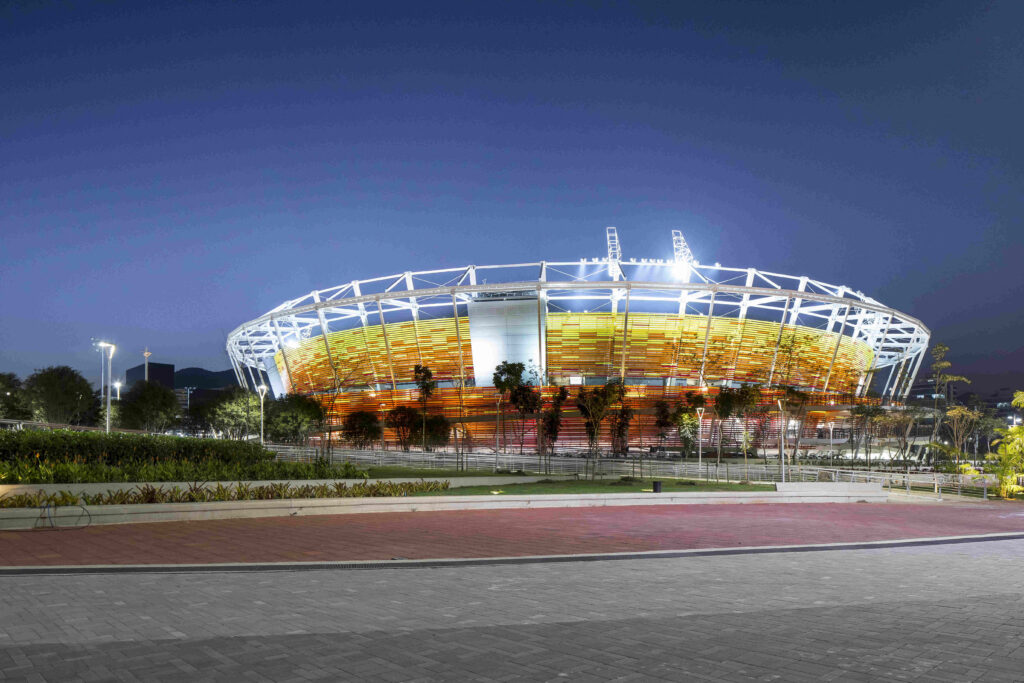
I’ve had the privilege of working with —and learning from — some of the industry’s most talented designers and consultants, both at AECOM and through our world-class collaborators and partners. Leading high-performing teams and mentoring emerging leaders has been a particularly rewarding part of my journey.
From a delivery perspective, what does it take to create a stadium that reflects its local community while meeting global standards for fan experience?
Every sports client has its own unique history, geographical connection, and relationship with its fans and their communities. At the same time, clubs and venue operators are increasingly looking to host ever more ambitious and inclusive event programmes that appeal to diverse audiences and users. As designers, we help our clients navigate complex commercial pressures and deliver assets that are both commercially viable and aligned with their long-term goals.
Venues must engage the next generation of tech-savvy supporters while preserving traditional matchday experiences. Our experience working on major events and multi-purpose community venues helps ensure our designs deliver the best of both digital and physical fan experiences while being flexible enough to adapt to changing needs over time.
We are currently designing Luton Town FC’s Power Court Stadium in collaboration with SISA and Klaska. It is a strong example of how a stadium can become an integrated piece of civic architecture and urban design, respecting the site’s rich history while navigating complex constraints. We collaborated closely with the Club and project team to deliver a fast-track planning submission, supporting their significant investment in stakeholder and community engagement to secure a smooth path through the approvals process. While the stadium itself will enable the latest in technology — AV, lighting, broadcast, frictionless service and low energy design — the Club’s vision is rooted in the spectacle of the game and live fan experience, creating a new town-centre destination with the stadium at its heart.
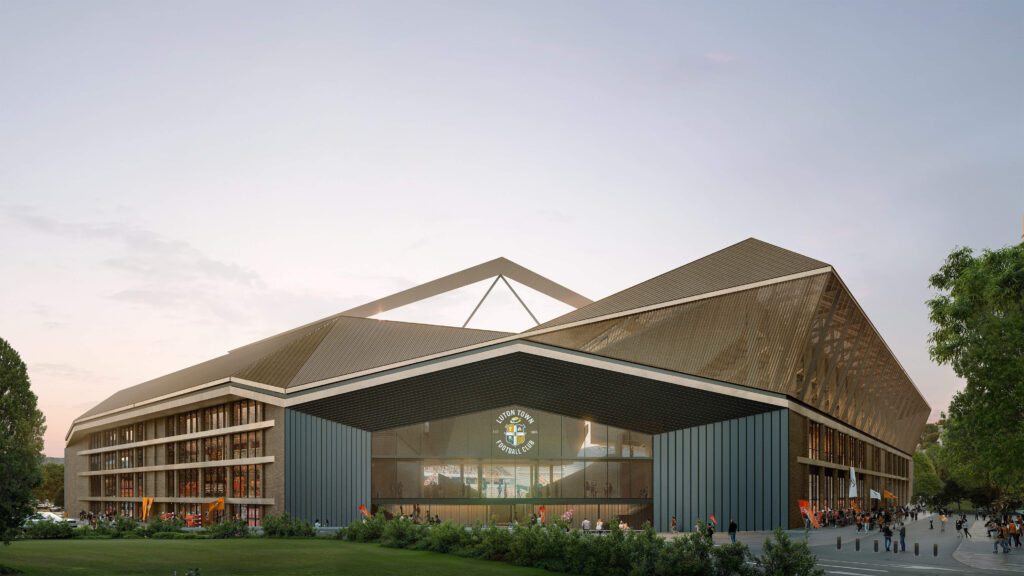
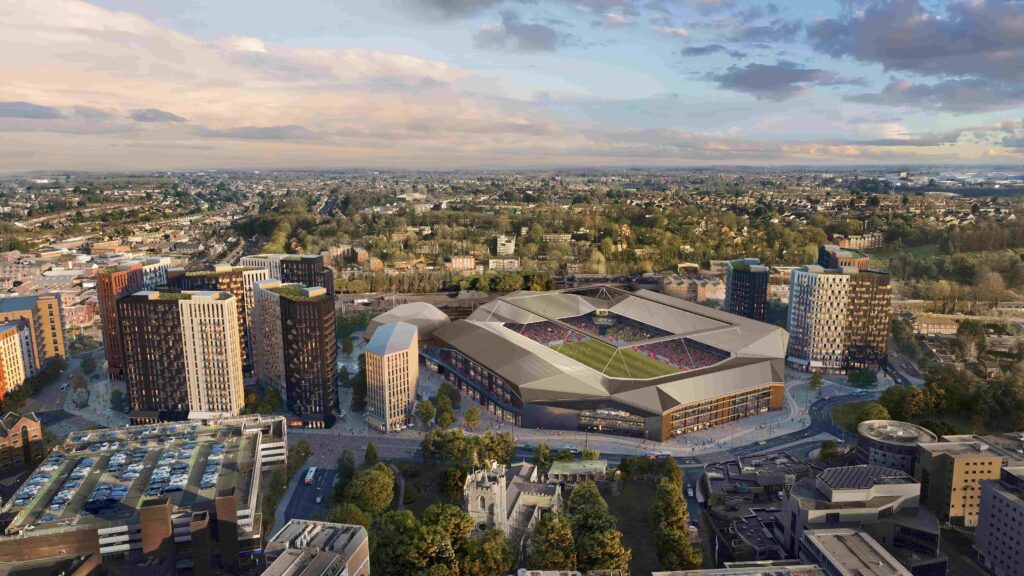
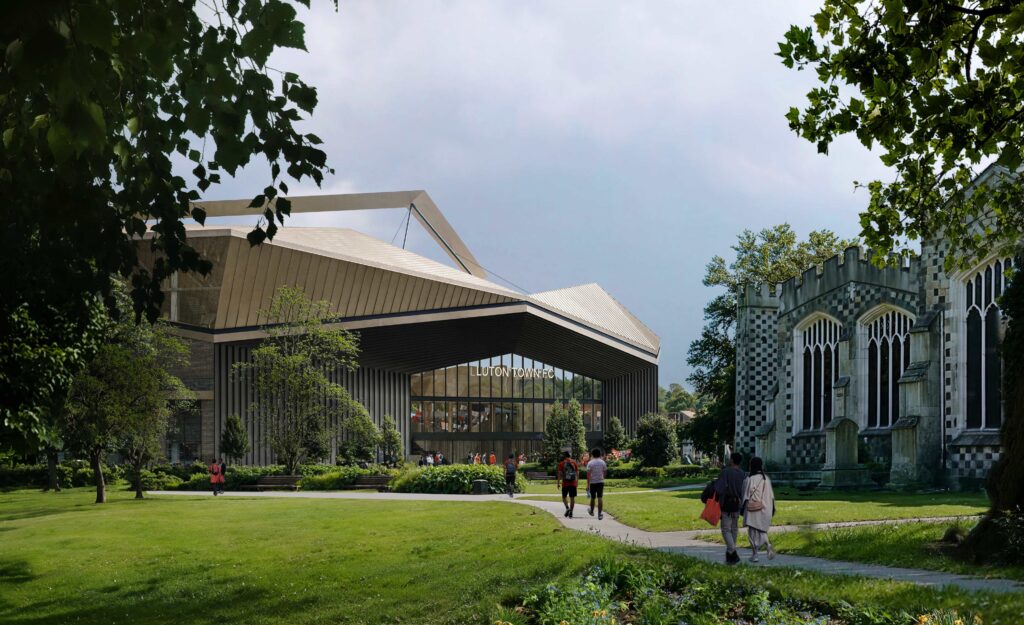
Similarly, the phased redevelopment of Windsor Park Stadium, delivered by us with Holmes Miller Architects, created a highly successful national stadium and home for football in Northern Ireland. While nationally important, the stadium remains grounded at a community level, providing a home for Linfield FC as well as leisure facilities for local clubs and residents.
How do you help clients shape stadiums that deliver long-term value — commercially, sustainably, and through their ability to adapt over time?
I led our UK-based engineering team on Al Janoub (Al Wakrah) Stadium with Zaha Hadid Architects; the first new-build stadium for the FIFA 2022 World Cup in Qatar and the centrepiece of a new public sports precinct south of Doha.
Al Janoub Stadium was a true path-finder project: a fully cooled 40,000-seat open-air stadium that could host World Cup matches during the tournament and later be reduced to a 20,000-seat capacity. When we began the project in 2013, the decision to move the tournament to winter had not yet been made, so our focus was on ensuring it could be delivered in the summer. In doing so, we helped establish program-wide standards and procedures for technical design, computational analysis, constructability, BIM, safety, and sustainability — setting benchmarks that shaped many of the stadiums that followed.
Creating a comfortable environment for players and spectators, housed within a bold, iconic architectural form, demanded a truly integrated approach across all design disciplines. We recognised the need to establish ambitious sustainability targets, including LEED, GSAS and a bespoke kgCO2 per-seat target, which played an important role in guiding the team toward lean design principles and smart material choices.
To remain viable year-round, stadiums must be adaptable and multifunctional to go beyond matchday use. For Al Janoub Stadium, we developed a comprehensive legacy transformation plan that balances adaptable permanent infrastructure with temporary, demountable elements and modular overlay, designed to be relocated and reused elsewhere. This approach supports a long-term vision for sustainable social infrastructure for Al Wakrah Sports Club. The stadium’s removable upper tier makes space for future education, community, commercial, and healthcare facilities, seamlessly connecting with the wider precinct. The venue itself remains highly flexible, capable of hosting a broad range of sports and other on-pitch events.
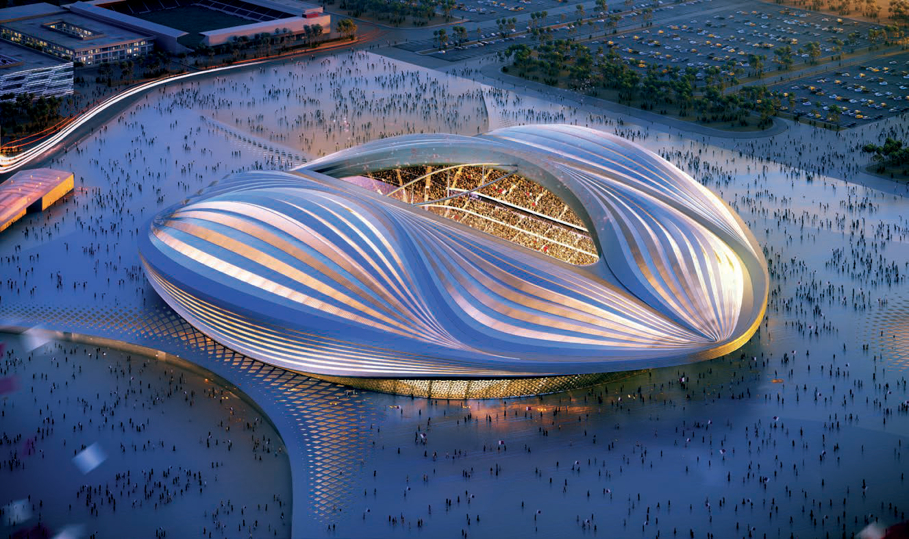
What’s key to delivering complex venues quickly without compromising performance or flexibility?
The demand for delivering faster is a constant, responding to stakeholder expectations, the need to satisfy a rapid return on major investments, and the complex geopolitical factors that influence so many global construction projects.
For example, Japoma Stadium, a 50,000-seat venue for the 2019 Africa Cup of Nations in Cameroon, was conceived as a site masterplan in 2017 and delivered just over two years later. We used advanced technology to prototype design options and communicate through high-quality visualisations and immersive experiences, enabling fast, well-informed decision-making. Ultimately, it was our expertise in constructability and innovation — delivering a simple, functional, and adaptable stadium using modular, repeatable components —alongside a close partnership with the main contractor, Yenigun, that made this achievement possible.
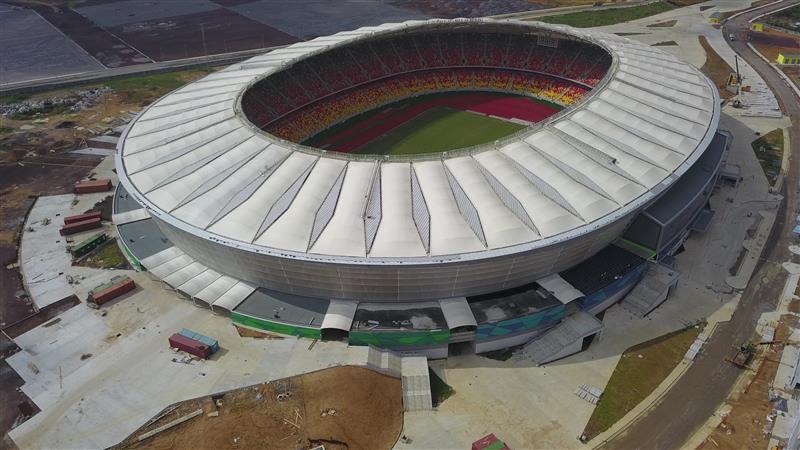
Establishing clear routes to stakeholder engagement, understanding the local regulatory framework, and proactively managing project risks and opportunities allowed us to remain agile during the design stage and derisk the procurement and construction. It is this experience that I aim to bring to every project, grounded in lasting partnerships between architects, engineers, operator and clients, which are essential to delivering a successful venue.






